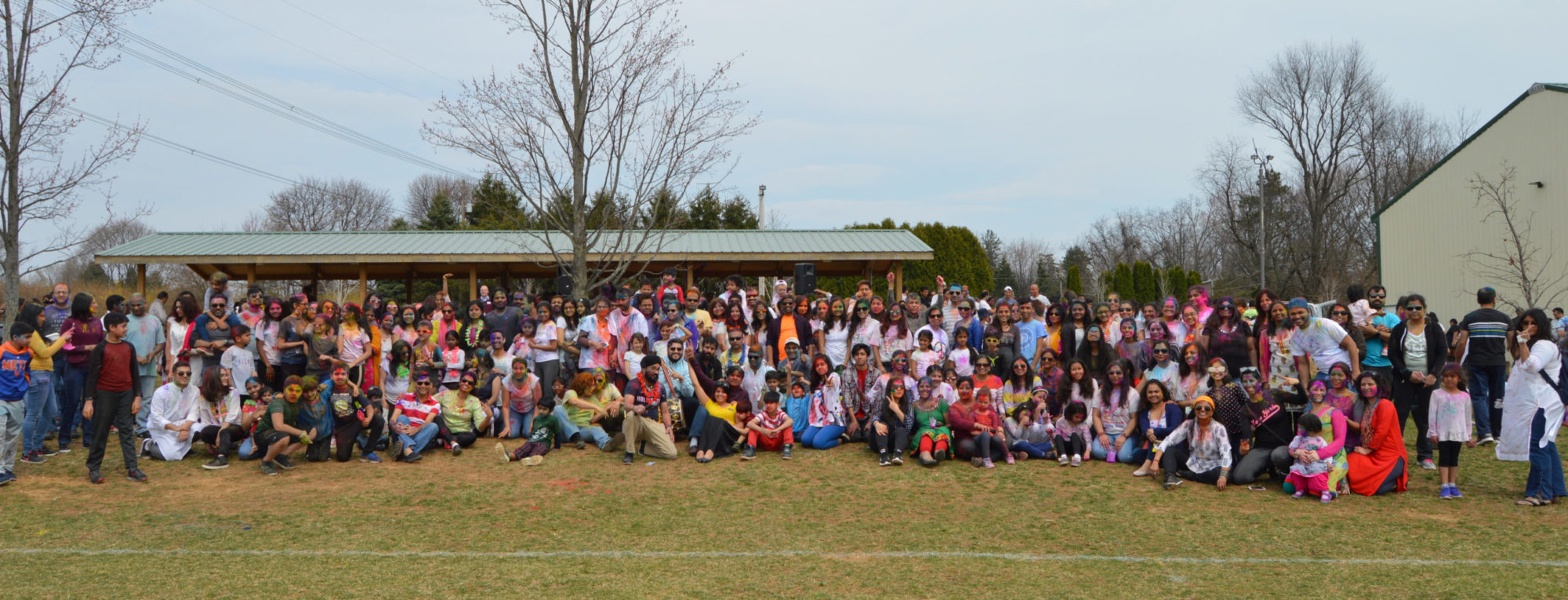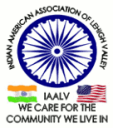INDIAN-AMERICANS IN NORTH AMERICA
Urgency for Social Integration and Political Assimilation
An Important Step Necessary for Their Future Generations
By
Ashim K. Bhowmick
To emerge out of the dominance of alien environment – and the barrage of non-akin western customs into something meaningful and tangible, the estranged Indian Diaspora celebrates a long repertoire of religious, cultural, and social activities every calendar year. These performances and functions organized by the Indian immigrant communities across the United States recreate a ‘homeland’ – a memory and identity.
This is important and it flows in abundance among the members of this uprooted Diaspora precisely because none of them can afford to take their roots for granted. The vitality is born of a marvelous communal potential even if the homeland’s nostalgia is awesome.
The vitality of these parents is often seen to derive from professional accomplishments and intimacy of interaction with the members of their ‘own’ community. They are drawn to each other by a spontaneous condition of affiliation and alienation from their ‘homeland’. It invokes a vaguely powerful relationship drenched in primordial passion, but this very passion that lends an imaginary character and a false sense of convictions, belonging, and a comforting identity to the Diaspora.
The magnificent Indian regional cultures and performing Indian arts, love of beauty and life, with a longing for something beyond, and deeper than the materialistic American milieu, epitomize the cultural traditional heritage that the Indian-American community is trying to maintain in order to pass on the same to their children effectively. But it also has a propensity to invent an imaginary culture of India in this adopted land, thereby, defeating the sole purpose, which is, appropriately passing on the heritage to their children. Many second-generation children strongly feel that these programs are geared towards their parents and offer very little for them to relate to. This leaves the second generation in disarray and, perhaps, forces them to search for an identity, which is different from what their parents envision.
The industry of these parents and their relative affluence now seem to have turned against them making them a visible target for fanning latent hatred and jealousy. Indian residents are often taunted and harassed by white, black, and Hispanic youths who are intolerant of their apparent ‘foreignness’ and their obvious economic ‘success’.
This is where the foresight and aspirations of Indian-Americans, who are willing to overcome old cultural barriers and narrow perception of collective interest, are of significance. Such aspirations should not only be national but be also of ‘International’ in content. The foresight for their future resides in ‘internationalism’. The community has to play a greater role in the wider socio-cultural and welfare processes in the US and not is solely oriented toward national politics in India. The process should be ‘self serving’ and will provide for ‘acculturation’, thereby, gradually neutralizing the ‘misperception’ of those who object to their alleged ‘foreignness’.
The collective and shared community conscience is no longer based upon any narrow nationalism or group interest to hang together. It has developed out of interaction and a genuine willingness to relate to one another. Most immigrants in their adopted countries inevitably form different ethnic groups and collectively act for various purposes, in spite of their internal differences. However, some Indian-American communities, as I see them, are different in their identity and articulation.
As in Lehigh Valley, Pennsylvania, the Indian-American community has wonderful accomplishments to its credit including a deep involvement with local welfare and community service activities such as: labor services to the well known ‘Habitat for Humanity’, provide food for homeless, raise funds for the Art’s Council, contribute funds toward renovation of an opera house, offer educational programs at institutions, donate funds toward local charity, develop and participate in “Adorning India” program for local art museum, participate in local Musikfest, Mayfair, multi-cultural activities, etc. The Indian-American Association of the Lehigh Valley thus involving in local welfare activities seeks to relate to their American neighbors in way that can impress any observer.
Many parents, here in the Lehigh Valley, encourage their children to relate to others, in order to learn from and understand people better. I think, this might not only shift gainfully the perception of Indian-American community and its future but also will equip our children with hybridized talents, which will be necessary for their survival in the 21st century. This will empower them with a unique sense of belonging and interaction, even though many of their parents struggle between returning ‘home’ and ‘staying-on’.
For many Indians, internationalism and multiculturalism are not in the air without roots or anchorage. It can well be traced from their own multicultural composite tradition. It is that tradition of multiethnic understanding, which the leaders may seek to bring forth, not just as skilled immigrant professionals or entrepreneurs, but also as an integral cultural vanguard of multicultural American citizenry.
An association representing Indian-Americans should provide the best nexus for ‘acculturation’, ‘mainstreaming’, and ‘social integration’ by adopting appropriate missions and by engaging themselves in a suitable range of activities, from positive political influence to social and cultural involvement. For instance, Indian-American Association of the Lehigh Valley strives for and has accomplished good success in the acculturation process by adopting the following mission:
“TO BE AN ORGANIZATION THAT BEST MEETS THE INDIAN-AMERICAN COMMUNITY’S NEEDS AND EXPECTATIONS THROUGH VARIOUS CULTURAL, EDUCATIONAL, SOCIAL, AND COMMUNITY SERVICE PROGRAMS.
TO APPROPRIATELY PASS ON THE HERITAGE TO OUR CHILDREN AND PREPARE OUR FUTURE GENERATIONS WELL TO BECOME GOOD CITIZENS OF THIS ADOPTED COUNTRY OF OURS.
TO DEVELOP AND EXECUTE APPOPRIATE ASSOCIATION ACTIVITES THAT ENABLES US AS WELL AS OUR CHILDREN TO DEVELOP A GOOD UNDERSTANDING OF OURSELVES AND AS WELL AS OTHERS; RESPECT FOR OTHER CULTURES; AND AN OVERALL APPRECIATION OF THE PHYSICAL, NATURAL, SOCIAL, POLITICAL, AND ECONOMIC WORLD IN WHICH WE LIVE.
TO ESTABLISH AND MAINTAIN GOOD RELATIONSHIPS WITH VARIOUS ETHNIC ORGANIZATIONS, AND THE LOCAL COMMUNITY IN GENERAL INCLUDING THE LOCAL ADMINISTRATIONS AND THE MEDIA.
TO DISPLAY THE INDIAN-AMERICAN COMMUNITY’S GENUINE CONCERN ABOUT THE COMMUNITY IN WHICH THEY LIVE.”
The community received spontaneous commendations on their unique but prudent approach. The associations’ new activities did not go unnoticed by the media. Clearly, this new direction was considered unique and a trendsetter by many. The local administrations here in Lehigh Valley, Pennsylvania, wished that other ethnic organization would emulate similar objectives for their associations.
Associations should strive for the Indian-American community’s presence in the local scene in a bigger and more positive way through altruism. We, as an Indian-American community across the United States, need to send a positive message to the larger community that ‘We Care for the Community We Live In.’
Many amongst us argue, implicitly and explicitly, that because of the Indian-Americans’ special attachment to their homeland, culture, etc., many Indian-Americans residing here have been somewhat reluctant to make what seems to them to be a final break from their past and culture, etc. and become US citizens.
No one can exist in a vacuum. Everyone is affected by the pulls of various centrifugal forces. The total complexities of relations between human beings and the society are known as politics. Recognizing this as a reality, a community will do extremely well by playing a positive role. ‘Politicalization’ is a necessity Indian-Americans cannot afford to deny any longer. It seems appropriate that an organization devoted to just this aspect, striving for the Indian-Americans ‘political assimilation’ has become an urgency – a sine qua non.
By understanding and participating in the process we will enrich ourselves, help others to understand us, and through that interaction, we will understand others better. I am certain that this will help alleviate misinformation and misperception. By adopting appropriate steps and conducting suitably, any ‘first generation’ immigrant can shift the perception of those who object to their ‘foreignness’.
Here in the Lehigh Valley, a newly formed organization, known as the Indo-American Political Action Committee is dealing with political issues ably by engaging in: raising campaign funds for candidates, sponsoring election debates, providing political education, installing Indian-Americans to serve in the local administration/boards, encouraging voter registration, etc.
I think of India – how her beloved multicultural legacy is enriching local culture and ‘acculturating’, when I observe the Indian-American children in Lehigh Valley, Pennsylvania, staging hybrid performing arts to large local audience and engaging in the local welfare process with great vigor. Their empressment toward everyone gives them identities related to the ‘mainstream’ America, and see the bright future of the Indian-American community flowering before me. This holds many promises for US.
About the author:
Ashim K. Bhowmick, President, Indian-American Association of the Lehigh Valley (1992 Part Year, 1993, 1996, & 1997 Part Year); Founding Member (1994) Indo-American Political Action Committee of the Greater Lehigh Valley; Member, Board of Trustees, Hindu Temple Society of Lehigh Valley (1996-98); and Chairperson, Planning Committee, Proposed Lehigh Valley Multicultural Center (1992-94), was instrumental in providing new direction to the Indian-American community. He changed the name of the association from India Association of the Lehigh Valley (IALV) founded in 1972 to Indian-American Association of the Lehigh Valley (IAALV) in 1996 and gave it a new logo, and wrote association mission/goal/promise/slogan and developed and implemented suitable programs toward that end.
Pennsylvania State Senate with a citation and Allentown Human Relations Commission with a Human Relations Award recognized his efforts in 2003. The citation reads like this –
“Ashim Bhowmick was the primary driver to change the course of 20 year old India Association of the Lehigh Valley from its primary focus to service its own community to one of interaction with other ethnic organizations in the Lehigh Valley. He offered programs to other ethnic organizations, media, and elected officials benefiting all people of the Lehigh Valley. Through his efforts, a lot more people now know about India and Indian-Americans in the Lehigh Valley.”
He strongly suggests that the Indian-American community must rise beyond their exclusive ethnic activities to do their share of community services including serving in the local boards to reach-out to the larger community and to pass on these traits to the second generation appropriately. Thus, this will not only help dispel misperception and misinformation about but will also provide an appropriate ‘mainstream’ identity and character to the Indian-American Diaspora.
Article has been widely published from 1997 until 2013 by almost all
leading Indian-American News Papers, as well as Indian Observer, New Delhi, India. Article was well received by the readership who relate well with the exigent message it puts forth.

